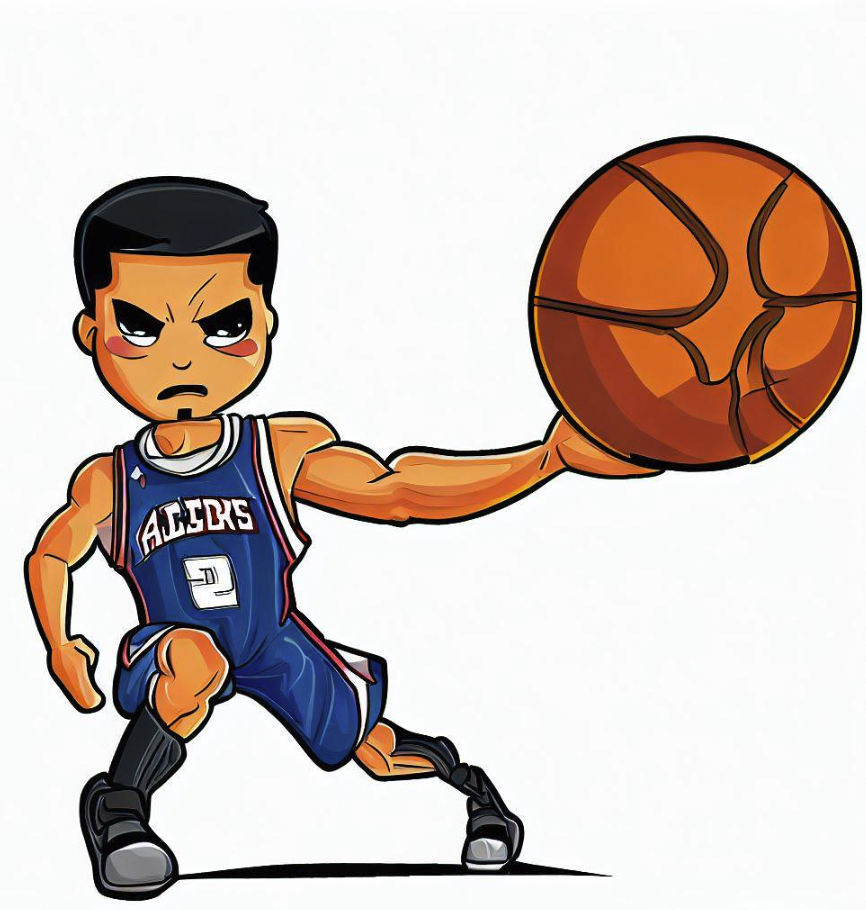The triangle offense is a strategic basketball system that has been widely used by successful teams at various levels of the game.
Developed by Hall of Fame coach Sam Barry and later refined by his assistant coach, Phil Jackson, the triangle offense has proven to be a highly effective offensive scheme that maximizes player movement, spacing, and ball distribution.
In this guide, we will look into the details of the triangle offense, exploring its history, principles, key components, and its impact on the game of basketball on the offensive side.
By the end of this article, you will have a solid understanding of how the triangle offense works and why it has been so successful.
History of the Triangle Offense
The origins of the triangle offense can be traced back to Sam Barry, who first introduced the concept in the 1940s.
Barry believed in a balanced attack that emphasized ball movement and player motion.
However, it was his assistant coach, Phil Jackson, who truly popularized and perfected the triangle offense during his coaching tenure with the Chicago Bulls and later with the Los Angeles Lakers.
Under Jackson’s guidance, the triangle offense became synonymous with success.
The Chicago Bulls, led by Michael Jordan and Scottie Pippen, won six NBA championships in the 1990s utilizing the triangle offense.
Jackson then brought the system to the Los Angeles Lakers, where he won five more championships with Kobe Bryant and Shaquille O’Neal.
Principles of the Triangle Offense
The triangle offense is built on several key principles that contribute to its effectiveness:
- Spacing: The triangle offense emphasizes proper spacing on the court, with players positioned in specific areas to create passing lanes and scoring opportunities.
- Player Movement: Constant player movement is a fundamental aspect of the triangle offense. Players are encouraged to cut, screen, and fill open spaces to keep the defense off balance.
- Ball Movement: The triangle offense promotes ball movement through passing, as players are constantly looking for open teammates and making quick decisions to keep the defense scrambling.
- Read and React: The triangle offense relies on players reading the defense and reacting accordingly. It encourages players to make intelligent decisions based on the positioning and movements of their teammates and opponents.
Key Components of the Triangle Offense
The triangle offense consists of several key components that work together to create a cohesive and fluid offensive system:
1. The Post Player
In the triangle offense, one player typically occupies the low post area.
This player is often a skilled big man who can score in the paint, pass effectively, and make intelligent decisions.
The post player serves as a focal point for the offense, attracting defensive attention and creating opportunities for teammates.
2. The Strong Side Wing
The strong side wing is positioned on the same side as the post player.
This player is responsible for providing spacing and options for the post player.
They can cut to the basket, spot up for a jump shot, or initiate a pick-and-roll with the post player.
3. The Weak Side Wing
The weak side wing is positioned on the opposite side of the post player.
This player’s primary role is to provide spacing and balance to the offense.
They can cut to the basket, relocate for an open shot, or serve as a safety valve for the ball handler.
4. The Corner Player
The corner player is positioned in the corner of the court, opposite the strong side wing.
This player’s role is to provide additional spacing and serve as a threat from the corner three-point line.
They can also cut to the basket or relocate for an open shot.
5. The Ball Handler
The ball handler is responsible for initiating the offense and making decisions based on the movements of their teammates and the defense.
They have the option to pass to the post player, strong side wing, weak side wing, or corner player, depending on the defensive rotations and opportunities.
Learn the Triangle Offense in 5 minutes or less
Advantages of the Triangle Offense
The triangle offense offers several advantages that contribute to its success:
- Balance: The triangle offense creates a balanced attack by involving all five players on the court. This balance makes it difficult for the defense to focus on stopping a single player or aspect of the offense.
- Player Movement: The constant movement and cutting in the triangle offense keep the defense on their toes, making it challenging to defend effectively. This movement also creates scoring opportunities and open passing lanes.
- Spacing: The triangle offense emphasizes proper spacing, which stretches the defense and opens up driving lanes and shooting opportunities. The spacing also allows for effective ball movement and quick decision-making.
- Read and React: The triangle offense encourages players to read the defense and make intelligent decisions based on their observations. This ability to read and react makes the offense adaptable and difficult to defend.
Case Studies: Success of the Triangle Offense
The success of the triangle offense can be seen through the achievements of teams that have implemented the system:
1. Chicago Bulls (1990s)
The Chicago Bulls, led by Michael Jordan and Scottie Pippen, dominated the NBA in the 1990s with their implementation of the triangle offense.
Under Phil Jackson’s coaching, the Bulls won six championships, showcasing the effectiveness of the system.
2. Los Angeles Lakers (2000s)
Phil Jackson brought the triangle offense to the Los Angeles Lakers, where he won five championships with Kobe Bryant and Shaquille O’Neal.
The Lakers’ success demonstrated the versatility of the triangle offense and its ability to adapt to different personnel.
3. College Basketball Success
The triangle offense has also been successful at the college level.
The University of North Carolina, under coach Dean Smith, utilized elements of the triangle offense to win two NCAA championships in 1982 and 1993.
Phil Jackson analyzes MJ highlights and the Bulls’ triangle offense on ‘Detail’
FAQs – Triangle Offense in Basketball
1. What is the triangle offense in basketball?
The triangle offense is a strategic basketball system that emphasizes player movement, spacing, and ball distribution.
It was popularized by Phil Jackson during his coaching tenure with the Chicago Bulls and Los Angeles Lakers.
2. Why is it called the triangle offense?
The triangle offense is named after the triangular positioning of players on the court.
The post player, strong side wing, and weak side wing form a triangle, which serves as the foundation of the offensive system.
3. What are the key principles of the triangle offense?
The key principles of the triangle offense include spacing, player movement, ball movement, and the ability to read and react to the defense.
4. How does the triangle offense create scoring opportunities?
The triangle offense creates scoring opportunities through constant player movement, proper spacing, and intelligent decision-making.
The system aims to exploit defensive rotations and create open shots for teammates.
5. Can any team use the triangle offense?
The triangle offense can be implemented by any team, but its success depends on the players’ understanding of the system and their ability to execute its principles effectively.
6. Are there any disadvantages to the triangle offense?
While the triangle offense has proven to be highly successful, it requires players to have a high basketball IQ and a strong understanding of the system.
It may take time for players to fully grasp the intricacies of the offense.
7. How can coaches teach the triangle offense effectively?
Coaches can teach the triangle offense effectively by breaking down its principles and components, emphasizing player movement and spacing, and providing ample opportunities for players to practice and execute the system in game-like situations.
8. Can the triangle offense be combined with other offensive systems?
Yes, the triangle offense can be combined with other offensive systems to create a hybrid approach that suits the team’s personnel and style of play.
Coaches often incorporate elements of other systems to enhance the effectiveness of the triangle offense.
9. Is the triangle offense still relevant in modern basketball?
While the game of basketball has evolved over time, the principles of the triangle offense, such as spacing, player movement, and ball movement, are still highly relevant in modern basketball.
Many teams continue to incorporate elements of the triangle offense into their offensive strategies.
10. Can the triangle offense be successful at the youth level?
The triangle offense can be successful at the youth level if properly taught and implemented.
However, coaches should consider the age and skill level of their players and adapt the system accordingly.
Summary
The triangle offense is a strategic basketball system that has been proven to be highly effective at various levels of the game.
Developed by Sam Barry and popularized by Phil Jackson, the triangle offense emphasizes player movement, spacing, and ball distribution.
Its key principles include proper spacing, constant player movement, ball movement, and the ability to read and react to the defense.
The triangle offense has been successful for teams such as the Chicago Bulls and Los Angeles Lakers, showcasing its versatility and adaptability.
While the game of basketball continues to evolve, the principles of the triangle offense remain relevant and continue to be incorporated into modern offensive strategies.


